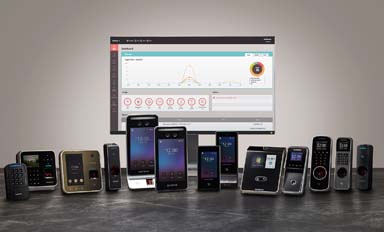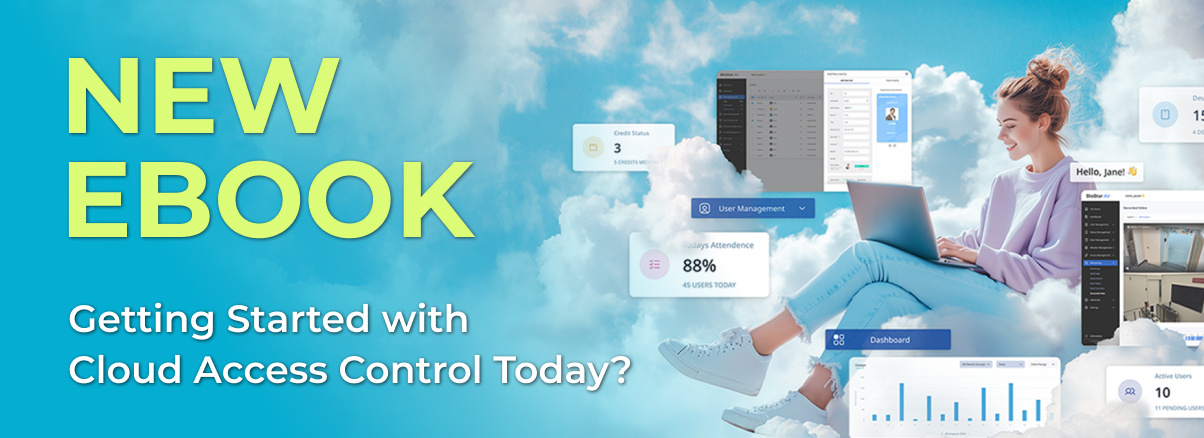- PRODUCTS
- PLATFORM
- BioStar 2 Access Control
- BioStar Air Access ControlNEW
- BioStar 2 Time and Attendance
- Suprema Mobile Access
- HARDWARE

- Biometric Readers
- RF/ Mobile Readers
- Intelligent Controller
- Peripherals
- OEM Biometric Modules
- Wireless Door Locks
-
Discontinued Products
- 4 Door Kit
- FaceLite
- BioStation A2
BioMini Plus 2
- BioStation 2
- OMNIS
X-Station 2(XS2-QAPB, XS2-QDPB)
- BioStation L2
- SOLUTIONS
- SUPPORT
- ABOUT
- device_hubHUB
- Latest press releases from Suprema

Discover how cloud access control is redefining security: shifting from door locks to business enablers. Learn why user-centric platforms like BioStar Air are changing the game.
This is the first article in our cloud access control series, adapted from our latest eBook. If you want to dive deeper into the future of access technology, credential flexibility, and platform comparisons—download our full guide.
Rethinking the door: From physical security to operational agility.
Access control has always been about determining who can go where, when, and how. But now, that definition is expanding. The systems that used to simply open doors now sit at the intersection of physical security, digital infrastructure, and workplace operations.
As organizations become more distributed, and user expectations shift toward seamless, app-like experiences, access control is no longer just about keeping doors locked, it’s about enabling agility, efficiency, and scale.
From keys to credentials.
For decades, access control systems revolved around mechanical keys, then PIN codes, and eventually RFID cards and fobs. But today, we’ve moved far beyond that. Modern access systems now support a wide range of digital credentials, including:
• Biometric recognition (facial and fingerprint).
• Mobile credentials on smartphones.
• App-less options like QR codes and web links.
• Smartwatch access through Digital wallet (Apple, Android…).
• Traditional methods like PINs and RFID cards, for backward compatibility.
These options reflect a broader evolution: access control is no longer just hardware, it’s a digital identity layer that spans locations, devices, and use cases.
From site-centric to user-centric.
Historically, access control was built around physical sites. Users had to be enrolled at a specific location, and credentials were often tied to a particular reader or controller. Any changes—adding a new user, updating credentials, revoking access—required manual, often on-site configuration.
That model no longer works.
Today’s organizations operate across multiple sites, time zones, and user types. The access control platform must be as flexible and mobile as the people who use it.
With modern cloud systems, the paradigm shifts from site-centric to user-centric. Now:
• One user can carry a single credential across many sites
• A single identity can include multiple credentials (face, mobile, PIN, card)
• Access rights can be assigned or revoked remotely, from anywhere
• Credentials sync across readers in real time, without manual setup
This shift reduces administrative overhead and provides a vastly better experience for both end users and system managers.
Access control is no longer just about security.
Yes, access control still plays a critical role in physical security, but that’s only part of its value.
Today, a modern access control system should also:
• Enable fast, automated onboarding and offboarding of users.
• Reduce reliance on on-site IT teams or front desk staff.
• Provide real-time visibility and control across distributed locations.
• Support privacy and compliance standards like ISO 27001 and GDPR.
• Deliver a smooth user experience: app-less mobile credential support, no complicated setup,…
But perhaps most importantly, access control has become a core component of business operations, especially in environments where space is rented, shared, or managed flexibly.
In coworking spaces, multi-tenant buildings, and franchise models, access control is now baked into the business model itself. It allows space managers to:
• Enroll new users remotely and automatically upon payment, before they even arrive.
• Grant access only for the duration of a membership or booking.
• Tie digital credentials to shared amenities like meeting rooms or printers.
• Troubleshoot access issues remotely, without stepping on site.
• Operate spaces around the world through a single cloud interface.
Access control is no longer just about unlocking doors, it’s about unlocking revenue, efficiency, and experience.
It has evolved into a platform that supports automated service delivery, seamless customer journeys, and scalable operations, especially for space-centric businesses looking to do more with less.
But not every system has evolved.
But not every system has kept pace. Many access control platforms still rely on legacy infrastructure (local servers, door controllers, and complex provisioning) despite marketing themselves as “cloud-based.” They were built to manage buildings, not people. But today, it’s the user experience that defines success: secure, seamless, and scalable.
That’s why we created the BioStar Air eBook, to help you cut through the buzzwords and make sense of what really matters when choosing a cloud access control platform.
And in our next article, we’ll start at the beginning: if on-premise access control still works, why change at all? Stay tuned.











